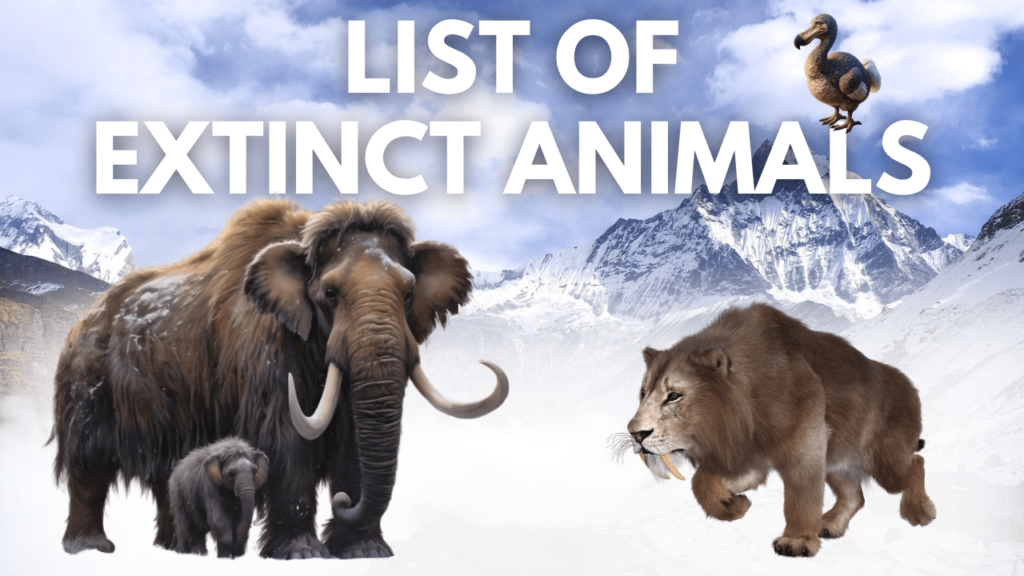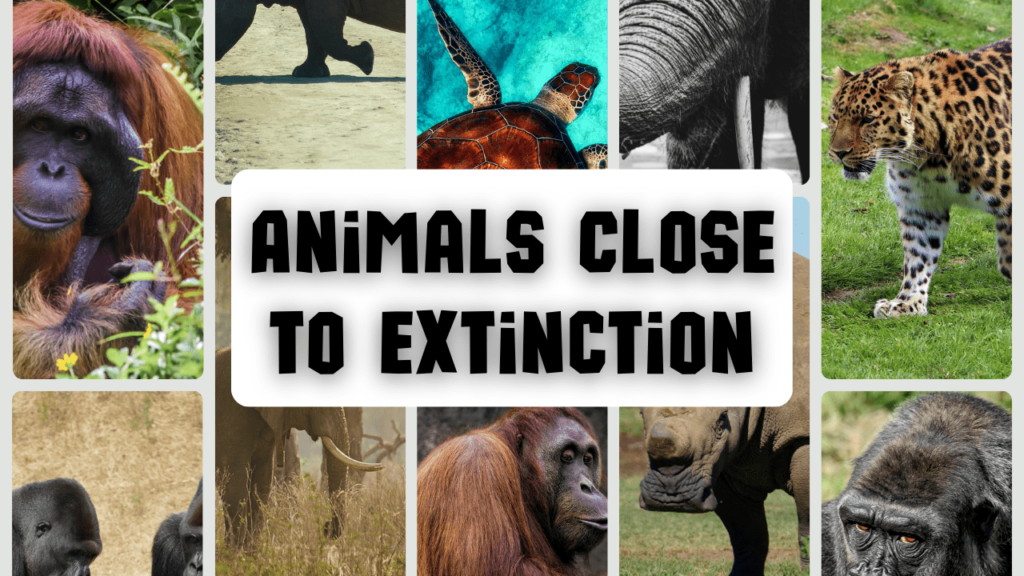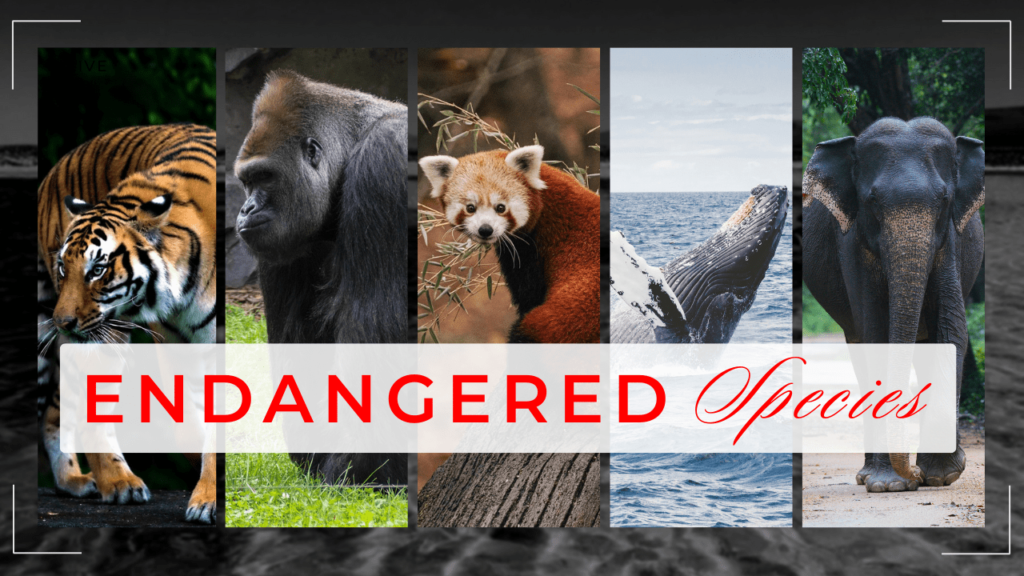Understanding the dynamics of endangered species status and their changing conservation statuses provides valuable insights into the effectiveness of conservation efforts and the challenges that remain.
Conservation efforts have played a crucial role in protecting and reviving many endangered species across the globe. From majestic birds to resilient mammals, numerous animals have seen their statuses improve due to dedicated initiatives and global awareness.
However, while some species have made impressive recoveries, others continue to face increasing threats, moving closer to the brink of extinction. This article explores the shifting conservation statuses of various animals, highlighting both success stories and ongoing challenges in the fight to preserve our planet’s rich biodiversity.
Understanding Conservation Status Categories
The endangered species status serves as a vital indicator of the challenges faced by wildlife populations and the success of global conservation initiatives.
1. Extinct (EX)
Species classified as Extinct (EX) no longer exist anywhere in the world. This status means that the species has completely disappeared from all known habitats. Extinction can occur due to various factors such as habitat loss, climate change, overexploitation, or disease. Examples include the passenger pigeon and the woolly mammoth.
Here is the list of 20 Notable Extinct Animals and the Shocking Reasons Behind Their Extinction
2. Extinct in the Wild (EW)
Species listed as Extinct in the Wild (EW) are no longer found in their natural environments and survive only in captivity or through cultivation. These species have lost their natural habitat and are dependent on human intervention for survival. Examples include the Pinta Island tortoise and the California condor, which are bred in captivity and reintroduced into the wild.
Additionally, explore our List of Animals Close to Extinction that are on the brink of disappearing.
3. Critically Endangered (CR)
Critically Endangered (CR) species face an extremely high risk of extinction in the wild in the immediate future. This category is reserved for species with critically low populations or severely fragmented habitats. Factors contributing to their status often include drastic declines in population, severe habitat loss, or ongoing threats such as poaching. Examples include the Javan rhino and the Vaquita.
4. Endangered (EN)
Endangered (EN) species are at a very high risk of extinction in the wild. While not as dire as Critically Endangered species, these animals still face significant threats that put their survival in jeopardy. The populations of endangered species are often declining, and they are vulnerable to various pressures. Examples include the African elephant and the Bengal tiger.
Check out the Difference Between Siberian Tiger vs Bengal Tiger
5. Vulnerable (VU)
Vulnerable (VU) species are at high risk of extinction in the wild. Although they are not as immediately threatened as those classified as Critically Endangered or Endangered, they face ongoing threats that could lead to a more severe status if not addressed. Vulnerable species often experience population declines and habitat pressures. Examples include the red panda and the Galápagos penguin.
6. Near Threatened (NT)
Near Threatened (NT) species are close to qualifying for a threatened category but are not currently considered at high risk of extinction. They are monitored closely as they may face future risks that could push them into higher threat categories. Examples include the common loon and the black-footed ferret.
7. Least Concern (LC)
Species classified as Least Concern (LC) are widespread and abundant. They face no immediate threat of extinction and are considered to be at low risk. These species have stable populations and do not currently face significant threats. Examples include the American robin and the house cat.
Endangered Species Status Changes
Animals That Were Previously Endangered and Are No Longer Endangered
Bald Eagle (Haliaeetus leucocephalus)

Check out the The Secrets Behind Eagle’s Hunting Techniques
- Common Name: Bald Eagle
- Scientific Name: Haliaeetus leucocephalus
- Family Name: Accipitridae
- Type: Bird
- Habitat: North American lakes, rivers, and coastal habitats.
- No. of Animals Back Then: Fewer than 500 breeding pairs in the 1960s
- No. of Animals Right Now: Over 3,000 breeding pairs
- Previous Status: Endangered (1978)
- Current Status: Least Concern
Conservation Successes: The Bald Eagle’s recovery is a remarkable conservation success story. Key efforts included banning the use of the pesticide DDT, habitat protection, and reintroduction programs. These measures helped increase their population from fewer than 500 breeding pairs in the 1960s to over 3000 pairs today.
Thanks to extensive conservation efforts, the conservation status of many species, including the Bald Eagle and Giant Panda, has significantly improved, demonstrating that dedicated preservation initiatives can lead to remarkable recoveries in wildlife populations
Giant Panda (Ailuropoda melanoleuca)

The conservation success stories of species like the giant panda demonstrate the effectiveness of international cooperation and habitat management.
- Common Name: Giant Panda
- Scientific Name: Ailuropoda melanoleuca
- Family Name: Ursidae
- Type: Mammal
- Habitat: Mountainous bamboo forests in China
- No. of Animals Back Then: Fewer than 1,000 in the early 1980s
- No. of Animals Right Now: Approximately 1,864 individuals
- Previous Status: Endangered
- Current Status: Vulnerable
Conservation Successes: Intensive conservation efforts, including habitat protection, bamboo forest restoration, and a successful captive breeding program, have helped stabilize the Giant Panda population. The establishment of nature reserves and legal protections has also played a crucial role.
Here is the Conservation Status of Pandas.
Arabian Oryx (Oryx leucoryx)
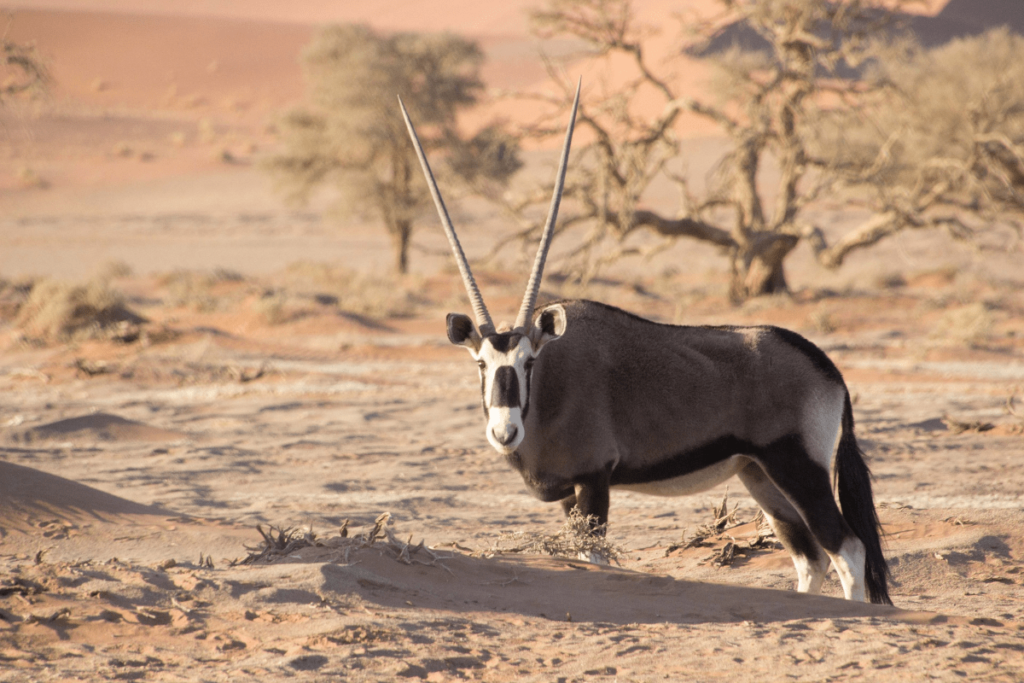
- Common Name: Arabian Oryx
- Scientific Name: Oryx leucoryx
- Family Name: Bovidae
- Type: Mammal
- Habitat: Arid deserts and semi-desert areas in the Arabian Peninsula
- No. of Animals Back Then: Fewer than 100 individuals in the wild in the 1970s
- No. of Animals Right Now: Over 1,000 individuals
- Previous Status: Endangered (1972)
- Current Status: Vulnerable
Conservation Successes: The Arabian Oryx was reintroduced into its natural habitat after being bred in captivity. Conservation measures included habitat restoration and protection from hunting. The species’ population has grown from just a few individuals in the wild to over 1,000.
Gray Wolf (Canis lupus)
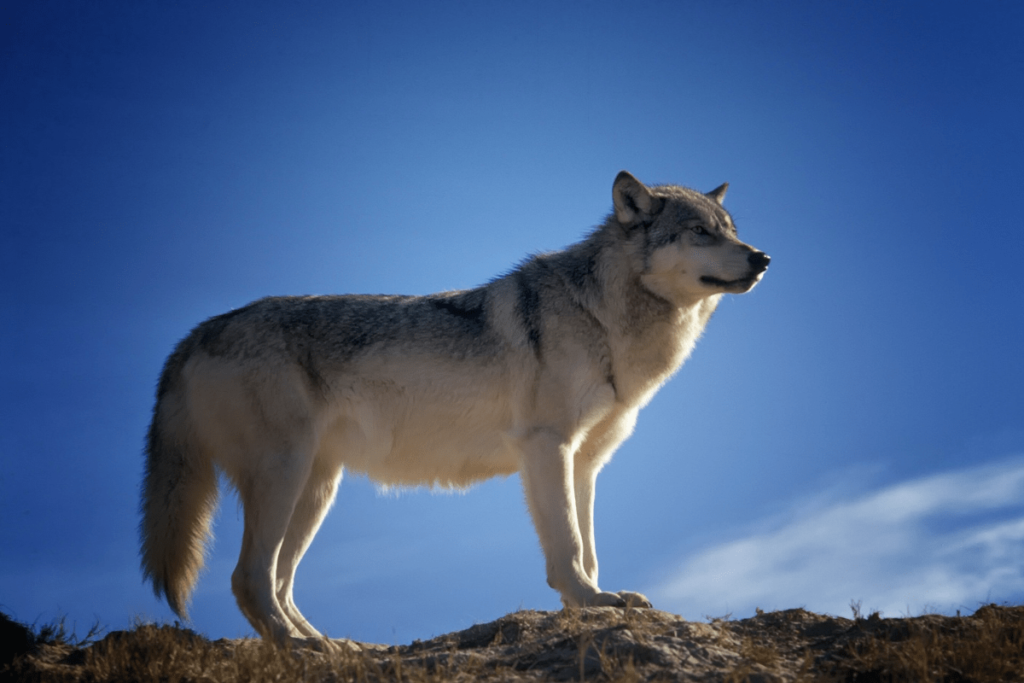
The success of species recovery programs can be seen in the rebound of the gray wolf population in several North American regions.
- Common Name: Gray Wolf
- Scientific Name: Canis lupus
- Family Name: Canidae
- Type: Mammal
- Habitat: Forests, tundras, grasslands, and deserts in North America and Eurasia
- No. of Animals Back Then: Fewer than 1,000 individuals in the contiguous U.S. in the early 1990s
- No. of Animals Right Now: Over 7,000 individuals in the U.S
- Previous Status: Endangered (1974 in the U.S.)
- Current Status: Least Concern
Conservation Successes: The Gray Wolf’s recovery in the U.S. involved legal protections under the Endangered Species Act, habitat management, and reintroduction programs in areas where they had been extirpated. Populations have rebounded significantly in the Northern Rockies and Great Lakes regions.
Here is a List of All Canidae Family Animals
Animals That Moved from Endangered to Vulnerable or Near Threatened
Humpback Whale (Megaptera novaeangliae)
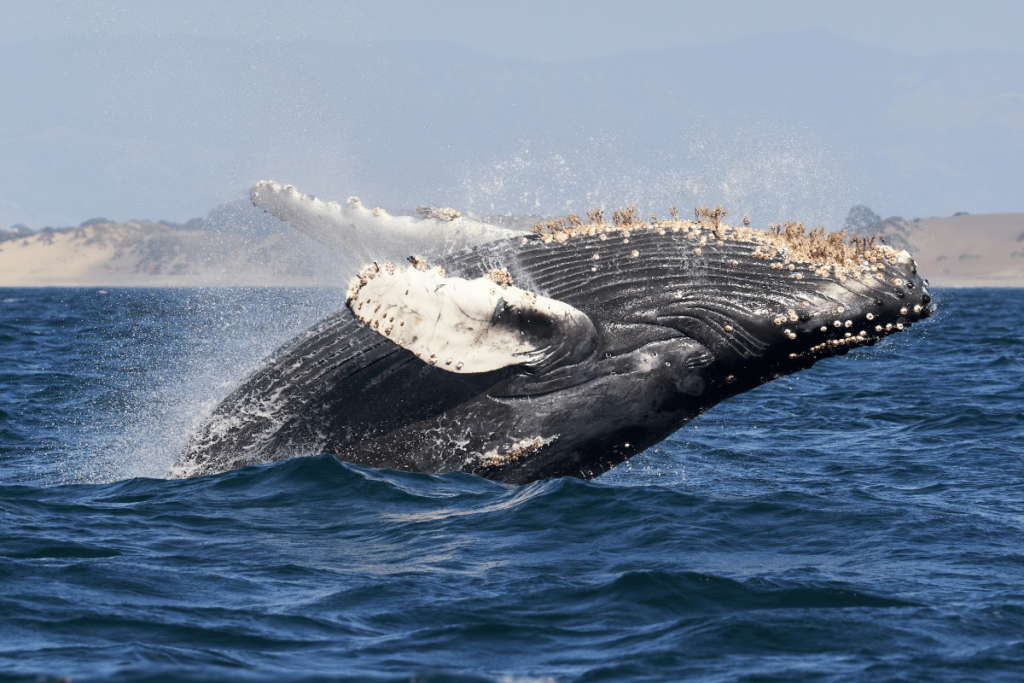
- Scientific Name: Megaptera novaeangliae
- Family Name: Balaenopteridae
- Type: Mammal
- Habitat: Oceans and seas worldwide, typically found in coastal and temperate waters.
- No. of Animals Back Then: Estimated fewer than 10,000 individuals in the 1960s due to whaling.
- No. of Animals Right Now: Approximately 80,000 individuals worldwide.
- Previous Status: Endangered (1988)
- Current Status: Least Concern
Conservation Successes: International whaling bans and protection measures have led to a significant population recovery. The establishment of marine protected areas and global conservation agreements has further supported their comeback.
Southern White Rhinoceros (Ceratotherium simum simum)
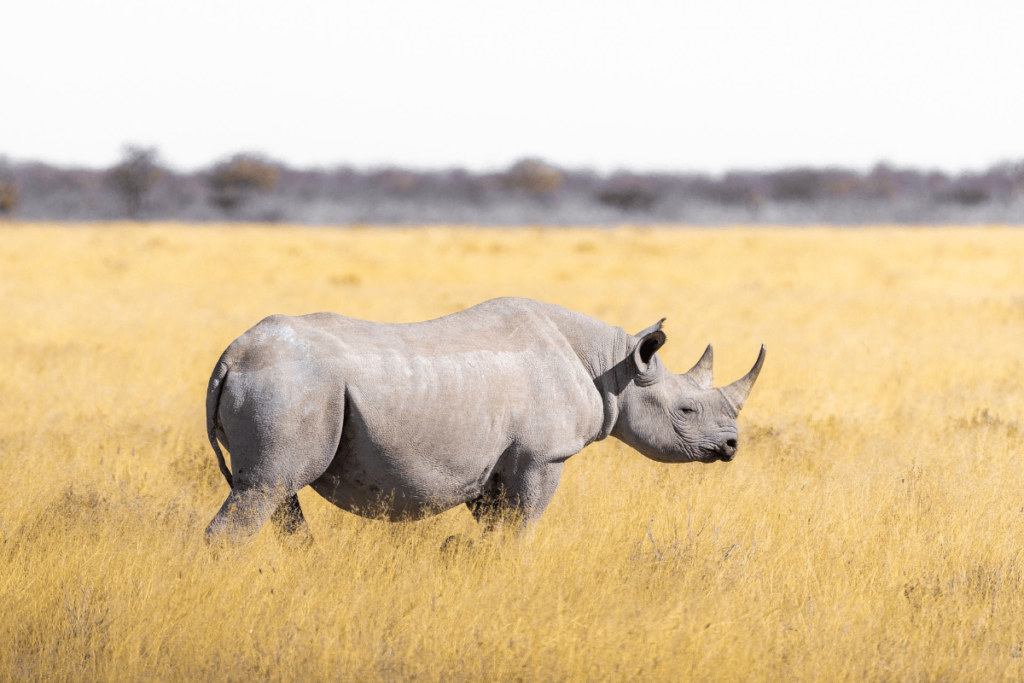
- Scientific Name: Ceratotherium simum simum
- Family Name: Rhinocerotidae
- Type: Mammal
- Habitat: Grasslands and savannas in southern and eastern Africa.
- No. of Animals Back Then: Fewer than 100 individuals in the 1900s due to poaching and habitat loss.
- No. of Animals Right Now: Over 18,000 individuals.
- Previous Status: Critically Endangered (1993)
- Current Status: Near Threatened
Conservation Successes: Intensive anti-poaching efforts, habitat protection, and successful translocation have increased the population from fewer than 100 individuals to over 18,000.
Kakapo (Strigops habroptilus)
- Scientific Name: Strigops habroptilus
- Family Name: Strigopidae
- Type: Bird
- Habitat: Forests and scrublands of New Zealand.
- No. of Animals Back Then: Fewer than 50 individuals in the 1970s.
- No. of Animals Right Now: Approximately 250 individuals.
- Previous Status: Critically Endangered
- Current Status: Endangered
Conservation Efforts: The Kakapo’s status improved due to a successful breeding program and predator control on their island refuges. However, the species remains critically endangered due to its limited range and ongoing challenges with habitat loss and inbreeding.
Animals That Went from Endangered to Critically Endangered or Extinct
Changes in the endangered species status of animals are often a result of shifting environmental conditions and human impacts.
Javan Rhino (Rhinoceros sondaicus)
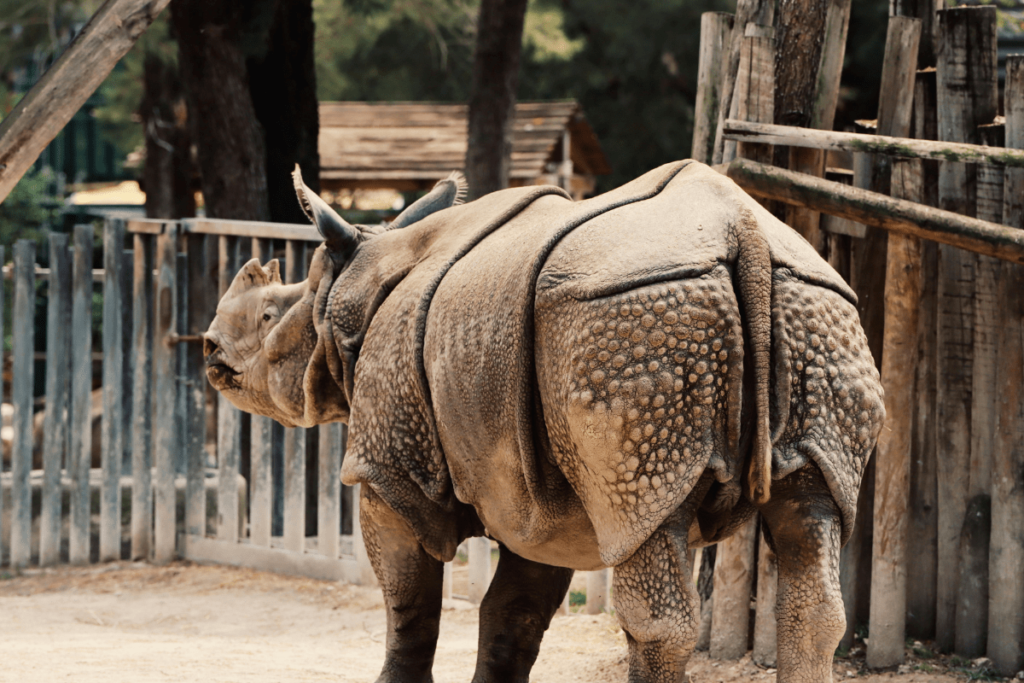
The endangered animals status of the Javan rhino has been a focal point of wildlife protection campaigns in Indonesia.
- Scientific Name: Rhinoceros sondaicus
- Family Name: Rhinocerotidae
- Type: Mammal
- Habitat: Lowland tropical forests and grasslands in Java, Indonesia.
- No. of Animals Back Then: Fewer than 100 individuals in the 1980s.
- No. of Animals Right Now: Approximately 80 individuals.
- Previous Status: Endangered
- Current Status: Critically Endangered
Reasons for Decline: The Javan Rhino’s population has been severely impacted by habitat loss and fragmentation. With fewer than 80 individuals remaining in the wild, continued conservation efforts are critical to prevent extinction.
Pinta Island Tortoise (Chelonoidis Abingdon)
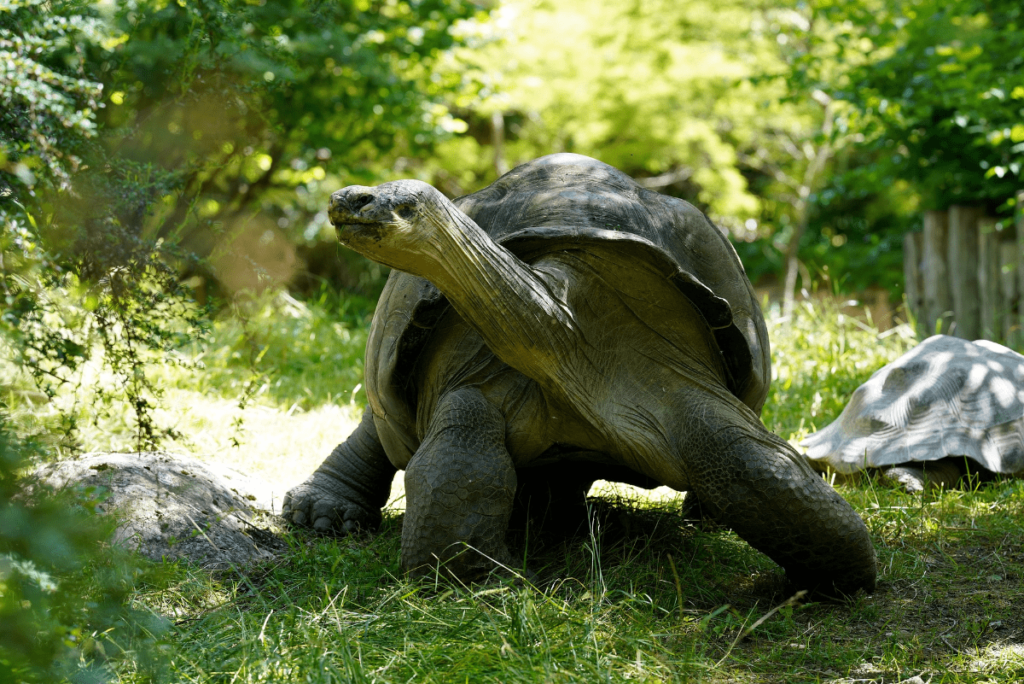
- Scientific Name: Chelonoidis Abingdon
- Family Name: Testudinidae
- Type: Reptile
- Habitat: Arid and semi-arid zones of the Galápagos Islands.
- No. of Animals Back Then: Fewer than 10 individuals in the late 20th century.
- No. of Animals Right Now: Extinct in the wild; the last known individual died in 2012.
- Previous Status: Endangered
- Current Status: Extinct (2012)
Reasons for Extinction: The Pinta Island Tortoise, with the last known individual (Lonesome George) passing away, faced extinction due to habitat destruction, invasive species, and overexploitation.
West African Black Rhinoceros (Diceros bicornis longipes)
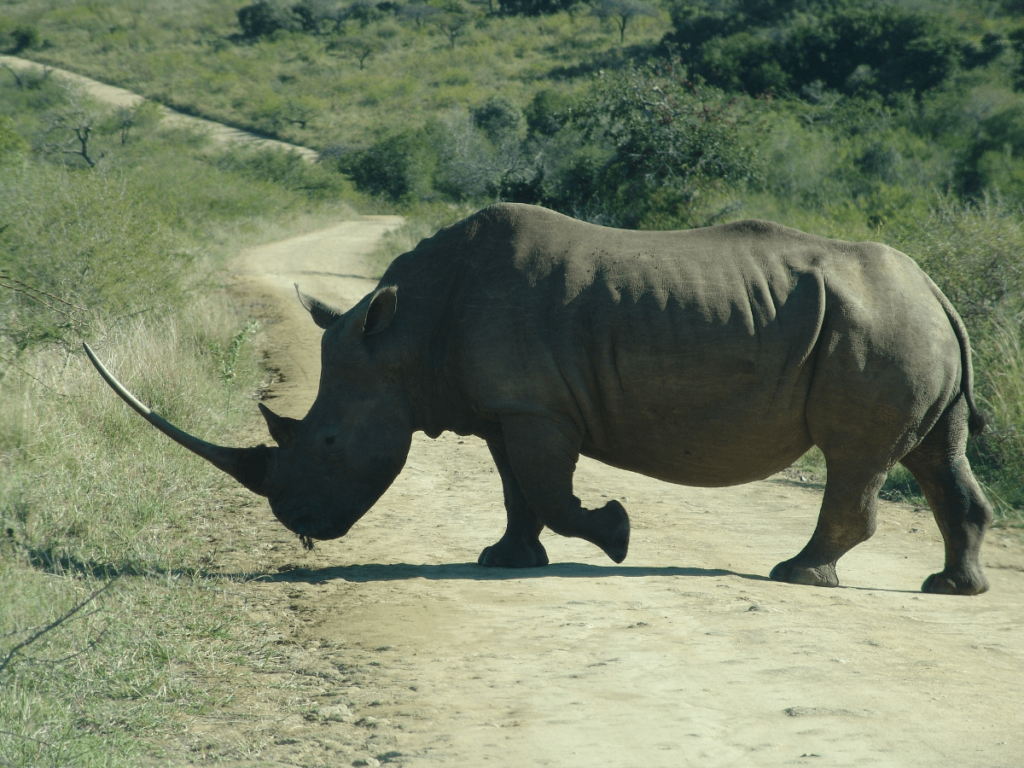
- Scientific Name: Diceros bicornis longipes
- Family Name: Rhinocerotidae
- Type: Mammal
- Habitat: Savannas and open woodlands in West Africa.
- No. of Animals Back Then: Fewer than 100 individuals in the 1980s.
- No. of Animals Right Now: Extinct in the wild; the last known individuals died in 2006.
- Previous Status: Critically Endangered
- Current Status: Extinct (2006)
- Reasons for Extinction: The West African Black Rhino was driven to extinction due to poaching for their horns and habitat loss. Despite conservation efforts, the population could not be sustained. Tracking the endangered animals status of the black rhino reveals the effectiveness of anti-poaching laws and habitat preservation.
Baiji (Lipotes vexillifer)
- Scientific Name: Lipotes vexillifer
- Family Name: Phocidae
- Type: Mammal
- Habitat: Yangtze River in China.
- No. of Animals Back Then: Fewer than 200 individuals in the early 2000s.
- No. of Animals Right Now: Functionally extinct; the last confirmed sighting was in 2007.
- Previous Status: Endangered
- Current Status: Critically Endangered, presumed extinct (2007)
Reasons for Extinction: The Baiji, or Yangtze River dolphin, suffered from habitat destruction, pollution, and human interference. Despite extensive search efforts, the species has not been sighted in recent years.
Endangered Animals Status (table)
| Common Name | Scientific Name | Family Name | Type | Habitat | Previous Status | Current Status | No. of Animals before Conservation | No. of Animals after Conservation |
|---|---|---|---|---|---|---|---|---|
| Bald Eagle | Haliaeetus leucocephalus | Accipitridae | Bird | North American lakes, rivers, coastal habitats | Endangered (1978) | Least Concern | Fewer than 500 breeding pairs in the 1960s | Over 3,000 breeding pairs |
| Giant Panda | Ailuropoda melanoleuca | Ursidae | Mammal | Mountainous bamboo forests in China | Endangered | Vulnerable | Fewer than 1,000 in the early 1980s | Approximately 1,864 individuals |
| Arabian Oryx | Oryx leucoryx | Bovidae | Mammal | Arid deserts and semi-desert areas in the Arabian Peninsula | Endangered (1972) | Vulnerable | Fewer than 100 individuals in the wild in the 1970s | Over 1,000 individuals |
| Gray Wolf | Canis lupus | Canidae | Mammal | Forests, tundras, grasslands, deserts in North America and Eurasia | Endangered (1974 in the U.S.) | Least Concern | Fewer than 1,000 individuals in the contiguous U.S. in the early 1990s | Over 7,000 individuals in the U.S. |
| Humpback Whale | Megaptera novaeangliae | Balaenopteridae | Mammal | Oceans and seas worldwide, coastal and temperate waters | Endangered (1988) | Least Concern | Estimated fewer than 10,000 individuals in the 1960s | Approximately 80,000 individuals worldwide |
| Southern White Rhinoceros | Ceratotherium simum simum | Rhinocerotidae | Mammal | Grasslands and savannas in southern and eastern Africa | Critically Endangered (1993) | Near Threatened | Fewer than 100 individuals in the 1900s | Over 18,000 individuals |
| Kakapo | Strigops habroptilus | Strigopidae | Bird | Forests and scrublands of New Zealand | Critically Endangered | Endangered | Fewer than 50 individuals in the 1970s | Approximately 250 individuals |
| Javan Rhino | Rhinoceros sondaicus | Rhinocerotidae | Mammal | Lowland tropical forests and grasslands in Java, Indonesia | Endangered | Critically Endangered | Fewer than 100 individuals in the 1980s | Approximately 80 individuals |
| Pinta Island Tortoise | Chelonoidis Abingdon | Testudinidae | Reptile | Arid and semi-arid zones of the Galápagos Islands | Endangered | Extinct (2012) | Fewer than 10 individuals in the late 20th century | Extinct in the wild; last individual died in 2012 |
| West African Black Rhino | Diceros bicornis longipes | Rhinocerotidae | Mammal | Savannas and open woodlands in West Africa | Critically Endangered | Extinct (2006) | Fewer than 100 individuals in the 1980s | Extinct in the wild; last known individuals died in 2006 |
| Baiji (Yangtze River Dolphin) | Lipotes vexillifer | Phocidae | Mammal | Yangtze River in China | Endangered | Critically Endangered, presumed extinct (2007) | Fewer than 200 individuals in the early 2000s | Functionally extinct; last confirmed sighting in 2007 |
The Endangered Species Act:
The Endangered Species Act (ESA) of 1973 stands as one of the most critical pieces of environmental legislation in the United States. Its primary objective is to safeguard species at risk of extinction and to ensure their recovery through a structured conservation framework. This article delves into the key aspects of the ESA, its significance, and its impact on species conservation.
Purpose of the Endangered Species Act
The ESA was designed to protect both endangered and threatened species, providing a comprehensive approach to prevent their extinction. The act focuses on conserving species at risk and their habitats, creating a legal framework for their protection and recovery.
Definitions:
- Extinct (EX)
- Species that no longer exist anywhere on Earth.
- Extinct in the Wild (EW)
- Species that survive only in captivity or through cultivation but are no longer found in their natural habitat.
- Critically Endangered (CR)
- Species facing an extremely high risk of extinction in the wild in the immediate future, often due to drastic declines in population or severe habitat loss.
- Endangered (EN)
- Species at a very high risk of extinction in the wild. They are not as critically endangered but still face significant threats that could lead to their extinction.
- Vulnerable (VU)
- Species at high risk of extinction in the wild. Their populations are decreasing, and they face considerable threats that could push them into more severe risk categories if not addressed.
- Near Threatened (NT)
- Species that are close to qualifying for a threatened category. They are not currently at high risk but could become so in the near future.
- Least Concern (LC)
- Species that are widespread and abundant. They face no immediate threat of extinction and are considered at low risk.
Key Provisions of the ESA
Listing Species:
The ESA establishes a process for identifying and listing species as endangered or threatened. This process involves scientific evaluations and recommendations by the U.S. Fish and Wildlife Service (FWS) or the National Marine Fisheries Service (NMFS).
Critical Habitat Designation:
The act provides for the designation of critical habitats essential for the conservation of listed species. These areas are protected from adverse modifications that could impede the species’ recovery.
Recovery Plans:
For each listed species, the ESA mandates the development of recovery plans. These plans outline the necessary steps and actions required to improve the species’ status and ensure its long-term survival.
Protections and Restrictions:
The ESA prohibits the “taking” (harm, harassment, or killing) of listed species and their habitats. It also restricts federal actions that could negatively impact listed species or their critical habitats.
Consultation Requirements:
Federal agencies must consult with the FWS or NMFS to ensure that their actions do not jeopardize the existence of listed species or destroy their critical habitats.
Implementation and Enforcement
The FWS is responsible for terrestrial and freshwater species, while the NMFS oversees marine species. These agencies play a crucial role in enforcing the ESA, conducting species assessments, and implementing recovery strategies.
Significance of the ESA
The ESA has been instrumental in preventing the extinction of numerous species, including the bald eagle, the American alligator, and the gray wolf. Despite its successes, the act has faced challenges and criticisms related to its economic and land-use impacts.
Amendments and Updates
The ESA has undergone several amendments to enhance its effectiveness and address emerging conservation needs. These updates ensure that the act remains relevant and responsive to the evolving challenges in species conservation.

Taking Action: Ways to Help Save Endangered Species
There are several impactful ways individuals can help prevent animals from going extinct:
Support Conservation Organizations
- Donate: Contribute financially to reputable wildlife conservation organizations that work to protect endangered species and their habitats.
- Volunteer: Offer your time and skills to organizations involved in wildlife conservation efforts, such as habitat restoration, wildlife monitoring, or educational outreach.
Advocate for Wildlife Protection
- Raise Awareness: Educate others about endangered species and the importance of conservation through social media, community events, or educational programs.
- Support Legislation: Advocate for and support policies and laws that protect endangered species and their habitats, such as the Endangered Species Act.
Reduce Your Ecological Footprint
- Sustainable Choices: Make environmentally friendly choices, such as reducing waste, conserving energy, and opting for sustainable products.
- Eco-Friendly Products: Choose products that are certified as environmentally friendly and support sustainable practices.
Support Sustainable Practices
- Responsible Tourism: Engage in eco-tourism and support businesses that promote conservation and responsible wildlife viewing practices.
- Ethical Consumption: Avoid products made from endangered species or that contribute to habitat destruction, such as unsustainable palm oil or illegal wildlife products.
Participate in Citizen Science
- Join Programs: Take part in citizen science programs that involve monitoring wildlife populations, reporting sightings, or collecting data that can help scientists track and protect endangered species.
- Report: Report illegal activities such as poaching or habitat destruction to the appropriate authorities.
Educate Yourself and Others
- Stay Informed: Learn about the species and ecosystems at risk and share this knowledge with others to foster a greater understanding of conservation issues.
- Promote Education: Support educational initiatives that teach young people about wildlife conservation and the importance of protecting endangered species.
Support Habitat Protection
- Advocate for Protected Areas: Support the creation and maintenance of protected areas such as national parks and wildlife reserves that provide safe havens for endangered species.
- Participate in Restoration Projects: Get involved in local habitat restoration projects that aim to restore and preserve critical ecosystems for wildlife.
By taking these actions, individuals can contribute to the broader effort of conserving wildlife and preventing species from going extinct.
Conclusion
Evaluating the endangered species status of animals helps prioritize conservation efforts and allocate resources to the most vulnerable species.
In conclusion, tracking the shifting statuses of endangered species not only highlights the progress we’ve made but also underscores the ongoing challenges in wildlife conservation. From remarkable recoveries to heartbreaking extinctions, each case provides a unique lesson about the complexities of preserving biodiversity.
The dynamic nature of conservation statuses reflects the broader impacts of human actions and the effectiveness of our global efforts to protect vulnerable wildlife. By staying informed and engaged, we can contribute to more effective conservation strategies and support the continued survival of species at risk. Every effort, no matter how small, plays a crucial role in shaping a more hopeful future for our planet’s diverse wildlife.


